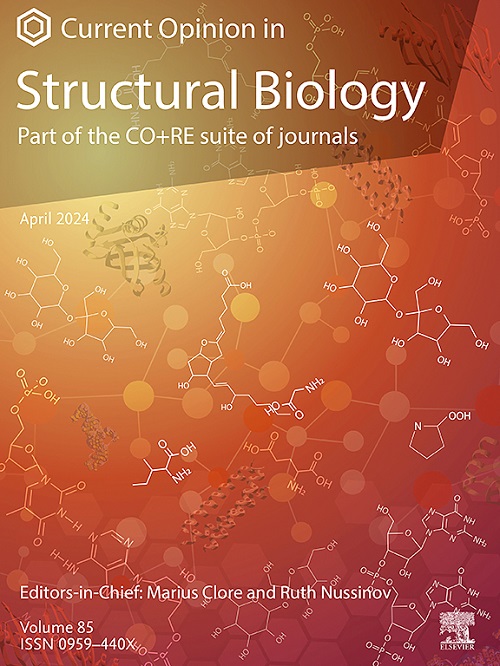The evolving role of solid state nuclear magnetic resonance methods in studies of amyloid fibrils
IF 6.1
2区 生物学
Q1 BIOCHEMISTRY & MOLECULAR BIOLOGY
引用次数: 0
Abstract
Beginning in the 1990s, solid state nuclear magnetic resonance (ssNMR) methods played a major role in elucidating the molecular structures and properties of amyloid fibrils. General principles that explain these structures and properties were uncovered and experimentally-based structural models were first developed from ssNMR data. Since 2017, cryogenic electron microscopy (cryo-EM) techniques have become capable of solving amyloid structures at near-atomic resolution. Although cryo-EM measurements are now the main approach for structural studies of amyloid fibrils, ssNMR measurements remain essential for studies of certain structures and structural features, as well as studies of dynamical and mechanistic aspects. Recent publications from various research groups illustrate the continuing importance of ssNMR and the unique information available from ssNMR measurements in amyloid research.
固态核磁共振方法在淀粉样蛋白原纤维研究中的发展作用
从20世纪90年代开始,固态核磁共振(ssNMR)方法在阐明淀粉样蛋白原纤维的分子结构和性质方面发挥了重要作用。揭示了解释这些结构和性质的一般原理,并首次从ssNMR数据中建立了基于实验的结构模型。自2017年以来,低温电子显微镜(cryo-EM)技术已经能够以接近原子的分辨率解决淀粉样蛋白结构。虽然冷冻电镜测量现在是淀粉样蛋白原纤维结构研究的主要方法,但ssNMR测量对于某些结构和结构特征的研究以及动力学和机械方面的研究仍然必不可少。最近来自不同研究小组的出版物说明了ssNMR在淀粉样蛋白研究中的持续重要性以及从ssNMR测量中获得的独特信息。
本文章由计算机程序翻译,如有差异,请以英文原文为准。
求助全文
约1分钟内获得全文
求助全文
来源期刊

Current opinion in structural biology
生物-生化与分子生物学
CiteScore
12.20
自引率
2.90%
发文量
179
审稿时长
6-12 weeks
期刊介绍:
Current Opinion in Structural Biology (COSB) aims to stimulate scientifically grounded, interdisciplinary, multi-scale debate and exchange of ideas. It contains polished, concise and timely reviews and opinions, with particular emphasis on those articles published in the past two years. In addition to describing recent trends, the authors are encouraged to give their subjective opinion of the topics discussed.
In COSB, we help the reader by providing in a systematic manner:
1. The views of experts on current advances in their field in a clear and readable form.
2. Evaluations of the most interesting papers, annotated by experts, from the great wealth of original publications.
[...]
The subject of Structural Biology is divided into twelve themed sections, each of which is reviewed once a year. Each issue contains two sections, and the amount of space devoted to each section is related to its importance.
-Folding and Binding-
Nucleic acids and their protein complexes-
Macromolecular Machines-
Theory and Simulation-
Sequences and Topology-
New constructs and expression of proteins-
Membranes-
Engineering and Design-
Carbohydrate-protein interactions and glycosylation-
Biophysical and molecular biological methods-
Multi-protein assemblies in signalling-
Catalysis and Regulation
 求助内容:
求助内容: 应助结果提醒方式:
应助结果提醒方式:


